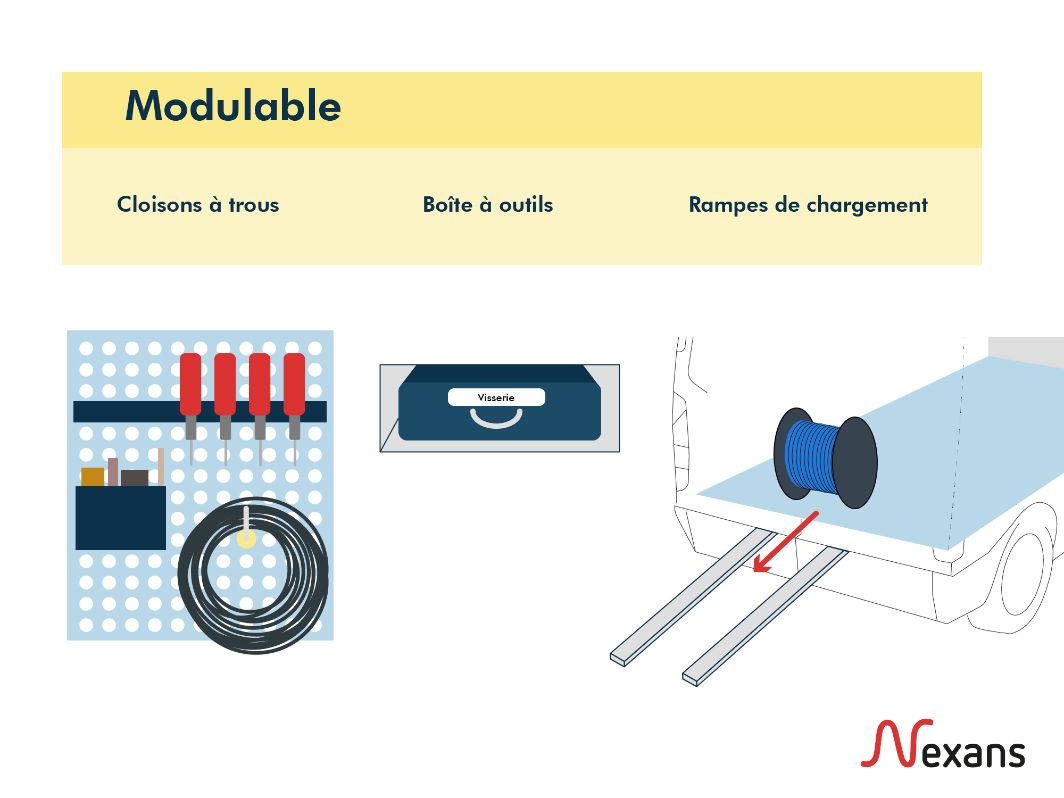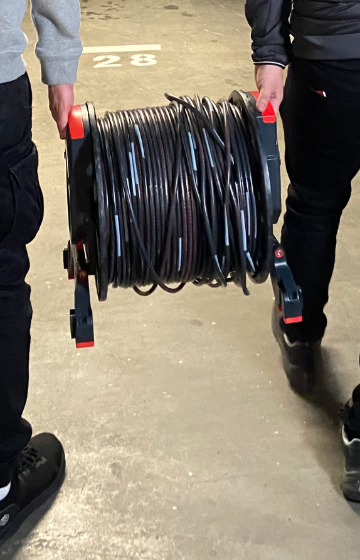Installation
How to organise your electrician's van ?

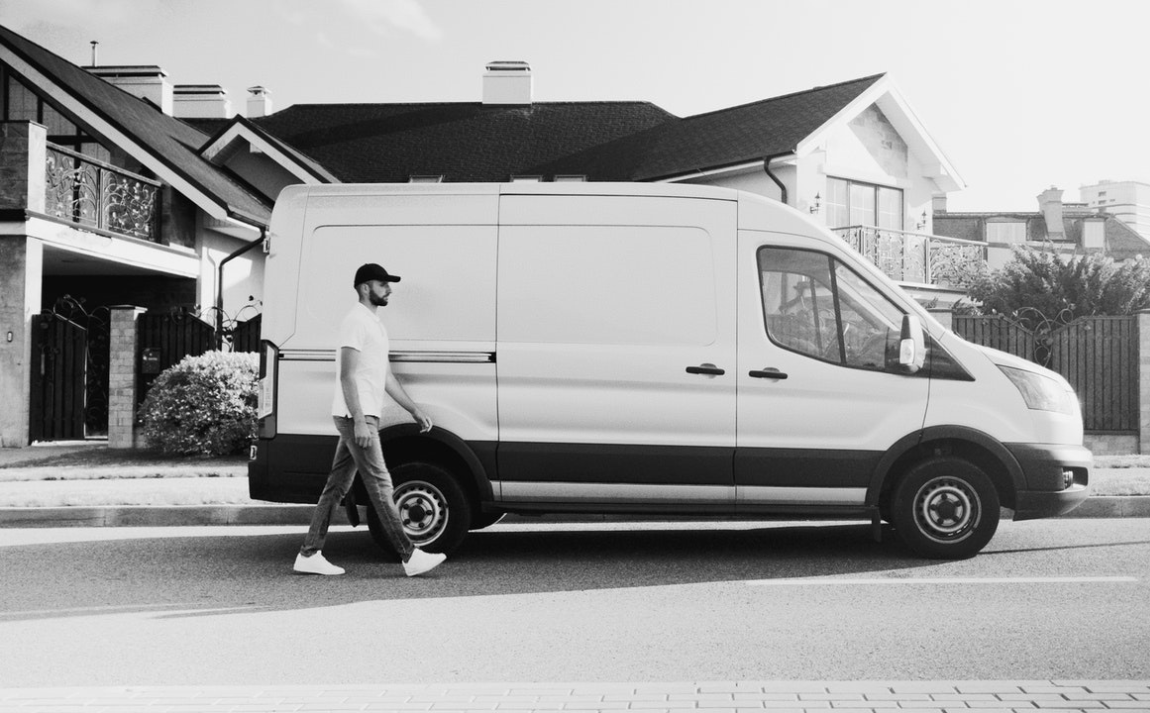
The van is your daily companion on your various worksites. A well-equipped van means you can react quickly to all your jobs, and always have your equipment to hand.
But to be effective, it needs to be well laid out and well organised. How do you organise your electrician's van?
Your safety and that of your load
Safety for the driver
First and foremost, a commercial vehicle allows you to travel in complete safety. For this reason, you need to ensure that the van is optimally equipped to guarantee the driver's safety during the journey. It is advisable to install a solid partition between the passenger compartment and the load, to ensure that no objects are thrown at the driver or the windscreen. To ensure that the load area is well ventilated, you will need both top and bottom ventilation.
Safety of equipment
Secondly, the vehicle must guarantee the safety of the equipment being transported. The vehicle must be designed to keep the equipment intact during the journey. Electronic equipment is very fragile and will not withstand knocks: you must therefore ensure that your load does not move. It is therefore advisable to have walls with attachment points, and to secure your vertical storage using straps. For loads on the ground, you can opt for lashing nets to prevent them from shifting.
Safety of the vehicle
What's more, the equipment you carry is expensive, due to the very high price of the copper contained in the cables, and the advanced electronic equipment you may be carrying. Once you've stopped and parked your van on a worksite, it needs to be secured to prevent theft. We advise you to store your load out of sight with a well thought-out layout. Ideally, however, you should opt for a van with no windows at the rear, or with opaque film to avoid arousing the curiosity of passers-by. For peace of mind and to deter theft, you can also invest in an anti-theft lock or an alarm designed for vans.
Electronic steps, anti-theft locks, roof air conditioning - there's a whole range of equipment available! A word of advice: don't overload your vehicle. The weight of the electrical equipment you're carrying is already considerable, so be careful about the weight added by this new equipment.
Safety at the wheel concerns everyone. Electricians are all the more concerned, since their job involves answering many telephone calls, travelling to various worksites and, above all, carrying loads of varying weights. To be able to drive safely, and above all to comply with road safety legislation, electricians need to adopt the right reflexes. Nexans reviews the essential information you need to know before getting behind the wheel.

Think practical
You have a lot of equipment, so you always have everything to hand. But if you want to find your way around, you need to keep your equipment tidy. Good organisation will make you more efficient and save you a little time before each job. The space available in your van is precious, so clever storage solutions will save you space.
Well thought-out storage
Make the most of vertical space! Closed storage units such as drawers or cupboards with doors will enable you to store your equipment without it moving during the journey. Don't hesitate to put labels on them to indicate what equipment is in them. The more cupboards you have, the better you'll be able to categorise your equipment and easily find what you're looking for. To save space, stack your cable reels with the Nexans Nroll, or your Mobiway reels with their anti-slip clamps.
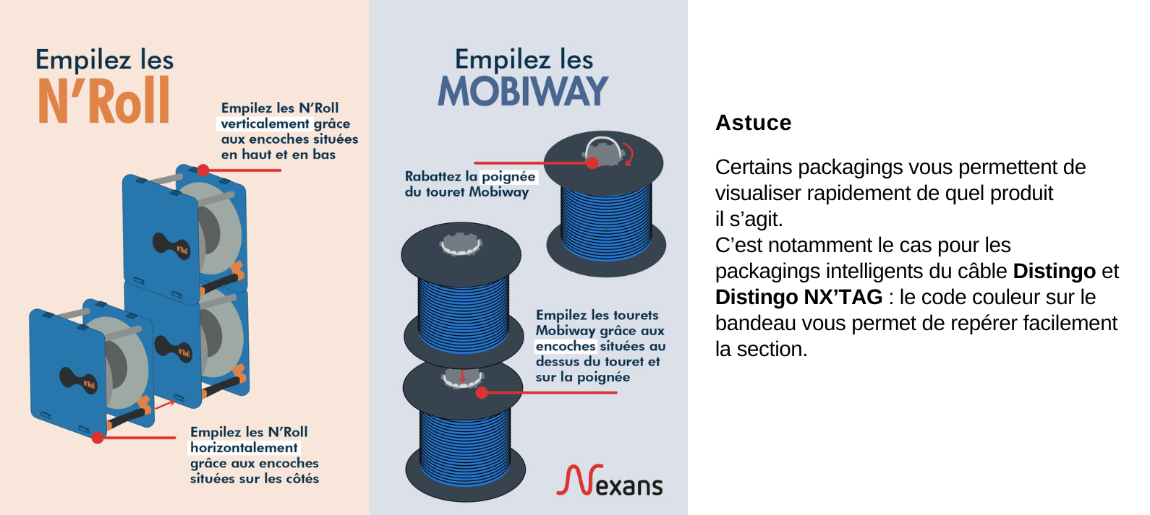
Maximise space
To maximise storage space, you can use the space available under the vehicle floor to install drawers. For heavy, cumbersome equipment such as ladders and stepladders, invest in roof rack attachments (but be careful not to exceed the total height of the vehicle when passing under bridges). As a general rule, make sure you organise your equipment by priority: the most frequently used items at the front of the load, more specific items at the rear.
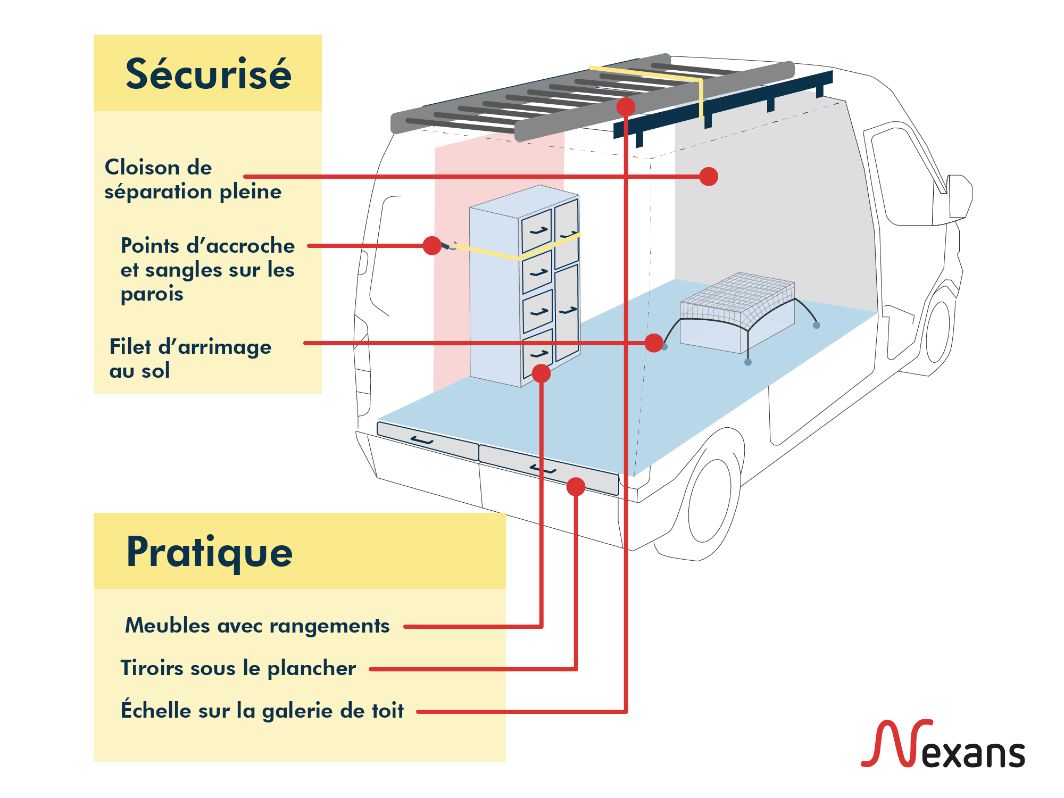
Adapt the layout to your needs
Opt for modularity
There are a number of best practices you can follow to optimise the layout of your commercial vehicle, but above all these installations must be designed according to your needs. To adapt to your day-to-day needs, your layout should be modular. Think about opting for partitions with holes where you can fix the storage units with straps, rather than screwing them in place. This way, you can remove them if you need to, or change the way your layout is organised. Pack your basic tools and screws in suitcases or briefcases, which you can easily transport to the site. To unload your reels and wheeled equipment (such as crates or cable reels), use loading ramps to avoid having to carry heavy loads.
Install made-to-measure storage units
If you're good at DIY, you can install these items yourself! You can go to a classic DIY shop to find the materials you need and have them cut to size. There are also companies that sell fitting modules specially designed for vans, offering a wide choice of drawers, floors and cupboards. Finally, there are a number of specialist companies that offer complete turnkey custom-fit solutions: simpler but more expensive.
